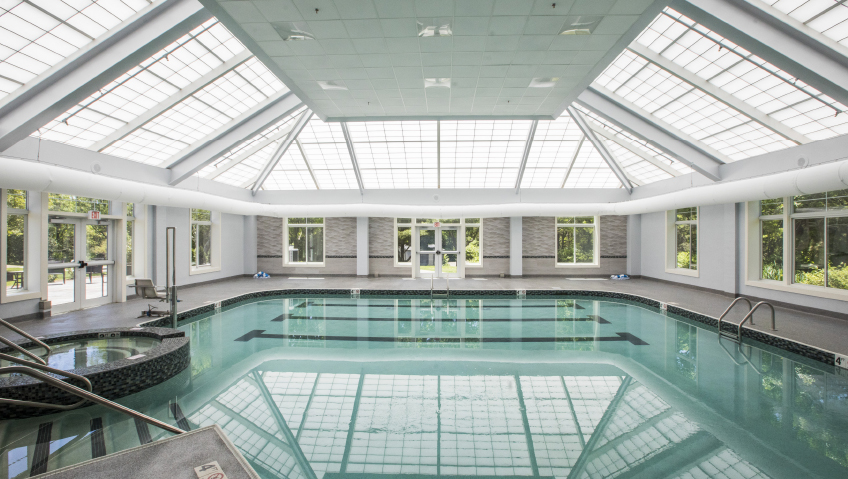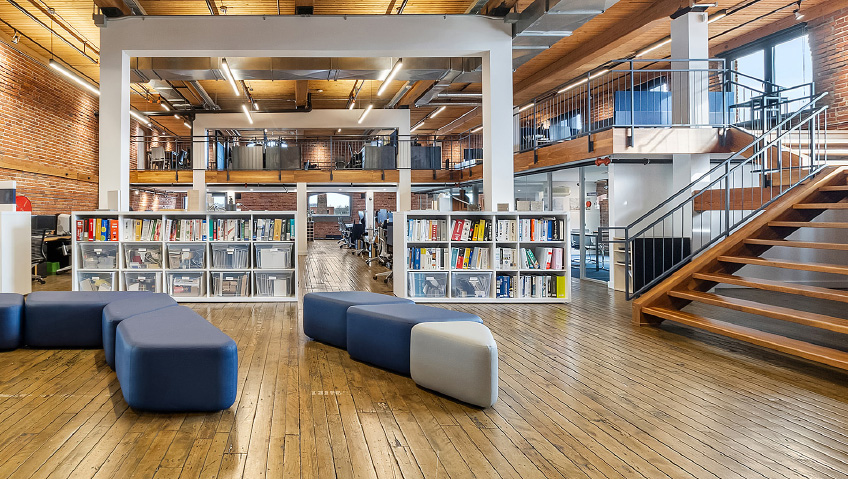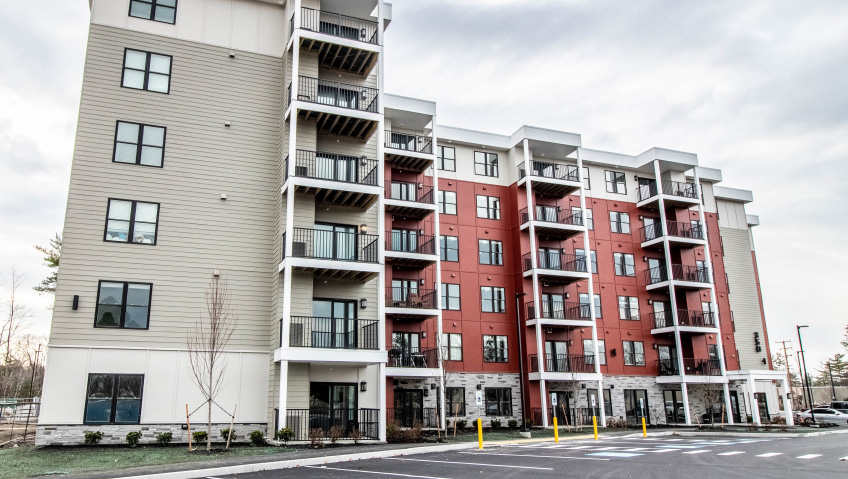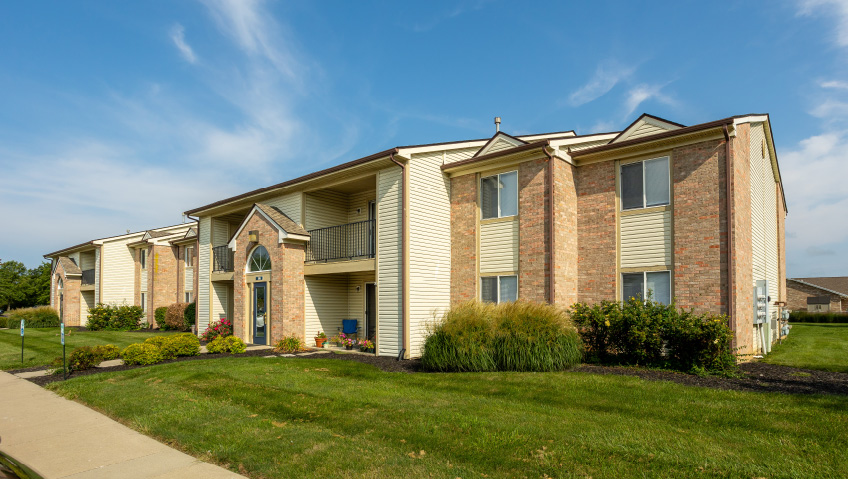It’s a unique niche, and one not many firms tackle—occupied renovations in senior living and senior healthcare—but the team at South Coast Improvement Company (SCIC) has successfully made it more than 80 percent of their business. Founded in 1998, the company boasts 35 full-time employees and more than $50 million in annual revenue as a leader in interior and exterior commercial design, construction and management services.
Aiming to change the mindset of traditionally bid projects through its design-build process, SCIC negotiates instead of bids, making its work a collaborative, round-table process that is both faster and more affordable. And with the company acting as general contractor, it’s also able to control the timeline.
SCIS is partnered with EGA Architecture, an architectural design and planning firm with a primary practice studying and designing senior living environments, and the two companies have an extensive number of unique projects in the field to their credit.
“With us being the construction manager and one point of contact, it means better coordination, including everything in relation to EGA, to make sure it all fits within the project,” says Gareth O’Neill, Project Executive with SCIC. It also means dictating speed, the budgeting phase and proposal pricing. On the engineering side, SCIC can control and drive the process through to the project itself when it’s in pre-con, and eventually into construction.
The company works predominantly in occupied spaces. As O’Neill explains, “These buildings cannot shut down and we need to be creative in our phasing, how we design the construction, how the pieces of the puzzle fit from the architectural standpoint, how it works in real time, and how it affects the building.”
Incorporating and phasing early in the project is vital, so SCIC being involved from the beginning phase heightens this collaborative approach.
“Traditional models will be last to the races,” says O’Neill. “This is where the owner would hire the architect and the engineer; they wouldn’t necessarily talk, they would do what they’re told to do, and then we come in later competitively priced, and then we start talking.”
This means the phasing may dictate much of the cost because certain things can’t be done executively. “I think from a design-build standpoint, being in early and collaborating with the architecture professionals means we can help make things flow a lot easier on the front end,” he says. “The outcome means more flow within the schedule of the project that results in costs being kept as we dictated them at the start.”
With one point of contact, SCIC would, in agreement with EGA for instance, talk to clients earlier on and set the expectations regarding scheduling and timing.
“We set parameters with the owner and we design it so everyone right from the start understands what we need and what our partners need in order to provide the service,” says O’Neill. This could mean, for instance, a municipality permit the company would then be responsible for. It also defers liability from ownership to the construction professional.
“A traditional model means owning every aspect, but with this design-build model they’re coming to us for our expertise, our knowledge of working with these spaces and what they require,” he says.
The bottom line is when it comes to speed and coordination, scheduling and setting expectations, the design-build process benefits numerous areas.
“From our perspective, South Coast has a really strong management team and that helps keep these projects on track and makes things run smoothly,” says Scott Hall, EGA Architecture CFO and Registered Architect. “Also, South Coast builds strong relationships, and they foster those relationships with the authorities who have jurisdiction, whether that’s the building inspector or the fire chief. They build those relationships early and that really helps smooth the process.”
Hall says SCIC is “excellent” at working around occupied building spaces, taking the time to ensure current residents remain in the building and disturbances are kept to a minimum.
“The design-build process allows us to streamline our designs,” he adds. “We have a long history of working in the senior housing industry. We’ve been doing this for 55 years and we understand what these buildings need, and the design-build process allows that,” he says. “There is a tremendous time savings for us to focus on the things that matter. Whether it’s the things you see, plumbing fixtures, or door hardware, we can focus on what the user and the owner are going to [experience] when the building is finished.”
The process also fosters teamwork, says Hall, with the owner, contractor and designer working together to both minimize effort and maximize gains.
“Each of us focuses on what we do best, whether that’s designing, building or managing the finances from the owner’s standpoint,” he says. “Keeping people living there while building is a huge task and you have to pay attention to the littlest details. South Coast does a great job of that from start to finish.”
One successful example is The Residence at Great Woods, an LCB Senior Living project in Norton, MA.
“For the Norton project, this building sort of evolved over time, with several additions added to it,” says Hall. “We had four different buildings all designed and constructed differently, and both from a code standpoint and a constructability standpoint we had to think about how we treat each one of these four buildings to bring them together to make one new memory support wing.”
The memory yard is currently unoccupied so it’s moving briskly, but there’s also phase construction of the existing, occupied building, necessitating two different approaches to the project, says O’Neill.
“The wandering garden is a very special feature and a lot of places don’t have that luxury, but they’re coming up with ways to design ceilings that give the atmosphere of being outside for that resident who may be suffering with mental illness. It’s really focused on the resident and their experience living in the building,” he explains.
The work comes with a number of unique challenges, but adding COVID-19 into the mix while working in occupied space was especially daunting. “We need to be creative in our phasing and redesign our methodology of how we’re going to do these projects to make them flow,” says O’Neill, highlighting two other projects as accomplishments in this area: Merrimack and VOA.
Atria Merrimack Place—a senior living community in Newburyport, Massachusetts—features a 45,000-square-foot expansion with 45 units for Alzheimer’s and dementia sufferers. All the mechanical, electrical, and plumbing systems in the new and refurbished rooms were replaced, and the new assisted living rooms have new millwork installed as part of the kitchen area. The $20 million Concord Park VOA (Volunteers of America) project features a 25,000-square-foot extension, with three stories of additional assisted living apartments, including studios, one- and two-bedroom homes. The roof was removed from an existing two-story addition and a third floor built for more senior living apartments.
Navigating difficult renovations during a pandemic is certainly a point of pride for South Coast, along with managing numerous budgets and pivoting and being nimble when challenges arise. But the company also prides itself on repeat business, which comprises 85 percent of its work, built on solid relationships.
Although the firm also tackles occupied space projects such as affordable housing, education, and some commercial real estate, its senior living projects remain at the forefront. “I don’t know of another company that specializes in renovating senior living projects, so I know our résumé speaks for itself,” says O’Neill.
Expanding to other markets is also planned for both companies, something they were attempting before the pandemic hit and something their clients have been encouraging them to pursue.
“With our understanding of working in these buildings, our clients brought us to new regions,” says O’Neill. “They were having difficulty with local contractors, people who weren’t experienced. We were asked if we work in North Carolina or Mississippi, and that was sort of a string to our bow for us.”
SCIC’s historical pricing data means it can help the investment side when doing acquisitions, says O’Neill, getting the series of data and questions answered and helping structure how they do projects, either working to budget or bringing the cost down. “I don’t know if there’s another company that provides that service to their clients,” he says.
Hall agrees, and also shares what sets EGA apart. “One [element] is our lengthy history in the senior housing industry; we’ve spent the last 55 years designing solely for the senior housing market. And secondly, we have an incredibly strong team here. The vast majority of our managers have over 20 years of experience at EGA, so we have incredibly deep staff and they’re incredibly well-versed in senior housing design.”
At present, design-build is the way forward in the current market, adds O’Neill, stressing that there’s a different conversation to have with proven contractors that leads to a collaborative approach with architects and engineers who offer a wealth of knowledge through a process that can only benefit the clients.
And that’s definitely something SCIC will continue to embrace.
“We’re not a changeover company. Our process allows us to bring out the deficiencies or coordination issues early so we can either address them off the bat, or come up with ways to get around problems with solutions on the front end,” O’Neill says. “We’ve been doing this for 20 years. This isn’t a division of our construction company; this is our niche, this is what we focus on.”






